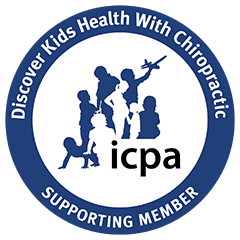It’s one of the first things that we want to see our babies do and it’s something that we look for as soon as we see a loved one or catch the eye of someone across the room. It’s the universal sign of friendliness and expresses feelings of happiness or delight. But there’s so much more to smiling than many realize. Read on to learn more about the benefits of smiling.
The Anatomy of a Smile
While it seems like a very natural thing to do, it’s surprising how much goes into a smile. It starts with the size and position of the teeth; and it can be affected by low lip lines and the size or shape of the mouth. Even the shape of the head can affect a smile. The average person has 43 muscles in the face, most of which are controlled by the seventh cranial nerve or the facial nerve. This particular nerve exits the cerebral cortex and emerges from the skull just in front of the ears. It then splits into five primary branches: temporal, zygo-matic, buccal, mandibular and cervical. These branches each affect different areas of the face, allowing the face to contort into its many different expressions. Interestingly enough, studies have shown that not everyone has the same number of facial muscles. In 2008, a study of 18 cadavers found that, while the five facial muscles that are necessary for making basic human expressions were in all 18 specimens, there were at least 10 other muscles that were not present in every case. This is clearly why not everyone smiles the same. There are the “crooked smiles” or the “lip curls” and is a smirk even really considered a smile? There are even smiles with specific names. For instance, the Duchenne smile is one that causes crinkling of the skin around the eyes, which is a sign of genuine joy.
Smiles are Contagious
Research suggests that smiles really are contagious. Humans will respond in kind because of mirror neurons, which are brain cells that fire both when we perform an action and observe the same action being performed by others. On the other hand, research also has shown that, while people tend to respond to a smile with one of their own, a frown will only draw a return frown about half of the time. Of course, everyone has heard the saying that it takes more muscles to frown than to smile, implying that less work means we should be smiling more often. The fact is that it takes about the same muscles for each action, but Dr. David Song, a Georgetown plastic surgeon, believes that it takes less effort to smile because people tend to smile more often than frown so the muscles involved can perform the action easier. Suggesting muscle memory or a history of exercising those muscles can make smiling come more naturally to some than to others.
An Emotional Connection
In 2019, a team of psychologists combined data from 138 studies testing more than 11,000 participants and found that facial expressions can prompt us to feel the emotions we associate with them. In fact, a 2012 study added some credence to the old adage “fake it ‘til you make it”. It showed that a smile can help us cope with current emotional stressors by reducing the intensity of our body’s response. Even if we don’t “mean it” and the smile is absolutely faked, it can affect our emotions and mitigate the emotional response we’re having to the stressful setting. A simple smile can turn an entire situation around.
A study in Britain found that one smile can generate the same level of brain stimulation as up to 2,000 bars of chocolate, according to Ron Gutman, the author of Smile: The Astonishing Powers of a Simple Act
The Power of a Smile
Whiles smiling can and does improve your mood, that’s only one of its superpowers. Smiling may also help you live longer. A study in 2010 found that genuine, intense smiling was associated with longer life. Though more research is needed to understand why, happy people tend to enjoy better health and a longer life.
People that smile a lot are also considered courteous, likable and competent. While the first two are fairly logical, competent may require some consideration. Someone that looks sad, anxious or perturbed may not seem as confident as one that is looking genuinely happy. A team of economists actually studied the effect of happiness on job performance and found that it has large positive effects on productivity. Positive emotions will energize and invigorate us while negative emotions tend to have the opposite effect. Another study also linked the release of dopamine triggered by happiness with improved decision-making, processing and learning, so a smiling worker is going to be more creative and efficient. Smiling also boosts the immune system by helping it function more effectively. When you smile your brain releases neuropeptides and other neurotransmitters (like dopamine, serotonin and endorphins), and these can help you feel more relaxed. Stress definitely makes our body work harder and that includes our immune system, so being relaxed is going to do the opposite.
Social Smiling
While it’s clear that smiling has benefits for us, what about those that are seeing our smile? Smiling can affect those around you, too. Our brain reacts positively, and the reward center of our brain is activated, when we see someone smile. Our facial expression or smile is also how others read our emotions and determine how we are feeling prior to approaching us. If we want to be friendly, open, and approachable, then wearing a smile is a good first step in any social situation. One of the biggest impacts from the pandemic was the wearing of masks. Many parents and caregivers raised concerns that wearing masks might negatively impact the social and emotional development of their children. Although these concerns were generally ignored; the fact that they were being raised by so many made them difficult to dismiss. When in public, children rely heavily on facial expressions. Not just those of other people but, more importantly, those of their parent or caregiver. Young children look for emotional cues from caregivers to interpret whether a new situation is potentially threatening. The development of this emotional communication is called social referencing. For instance, if a child is reaching for a hot stove and sees a fearful expression on a parent’s face, they will instinctively pull their hand back. Studies being published this past year have made it clear that, as might be expected, children are less accurate at determining emotional expressions from eyes alone as opposed to the whole face. One study found that this was particularly seen in children aged 3 to 5 years. The problem is that reading facial expressions is vital for preschoolers since they are typically not yet able to also consider the situation, the tone of voice or find other social cues when facial expressions aren’t available. Dr. Lynn Snow, a leading pediatrician in the U.K., acknowledges that it is too early to know the effect that mask-wearing will have on the long-term development of infants, such as emotional processing. However, we do know that institutionalized children devoid of interactions with caregivers are more likely to have developmental delays. She also stated that the inhibition of proper social interaction and facial recognition has been shown to lead to fear and anxiety among babies and children, which can have long-term consequences for emotional and social development.
In Summary
Smiling is important and, while we know that there are places that require masks, it’s important that we find opportunities to show our smiles. Not just for our own well-being but so that our children have the chance to see faces and study expressions, and learn how to interact with a world that isn’t hidden behind a piece of cloth. Be sure to speak with your Family Wellness Chiropractor if you have any concerns about the social emotional milestones of your children and, above all, smile.
Learn more about the benefits of chiropractic care and the benefits of making it part of your family’s wellness lifestyle. Click to schedule a complimentary consultation with Body & Balance practitioners today.
RESOURCES: DR. CLAUDIA ANRIG-THE WELLNESS FAMILY



